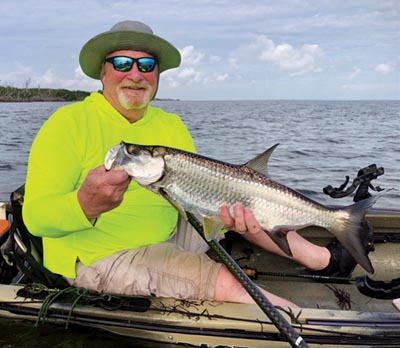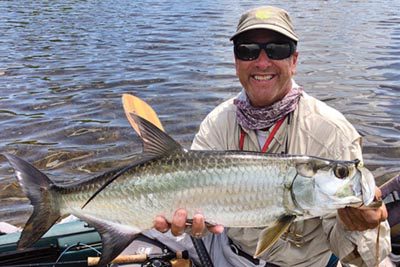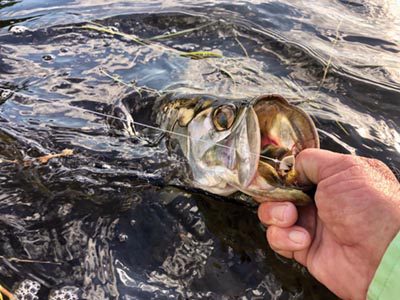
Spring is here and one of my favorite targets as the water warms are juvenile tarpon. Generally, around 10 to 20 pounds, with considerably larger ones in the mix, the fun factor on these fish is off the charts! Once hooked, they pull hard and jump completely out of the water, somersaulting through the air end over end. It’s quite a sight!
Baby tarpon “spots” are some of the most closely guarded secrets among guides in the Lower Keys, but many of the bridges in the Keys will have tarpon around, especially on an outgoing tide. And of course, you could always find them the old-fashioned way – by simply exploring likely areas. Tarpon are primarily nocturnal feeders, making sunrise, sunset and nighttime the best periods to fish them though you can catch them all day. They also seem to show themselves (“roll”) more frequently when there is little to no wave action from the wind.

First, make sure your hooks are razor sharp. This is true of most saltwater fish but particularly true with tarpon. I use Owner and Gamakatzu hooks exclusively because they are extremely sharp right from the package and stay sharp for a long time. Second, carry a small file in your gear at all times, and check the sharpness of your hooks every time you go fishing. Just drag the hook point across your fingernail to check it. If it doesn’t immediately stick, it’s not sharp enough – touch it up with your file. If you can’t reestablish a good point, toss that hook for a fresh one. (I was lazy about this in the early days of my fishing career, but not anymore.) Third, pay attention to your hook setting technique. With spinning gear, it should be short but very firm, and I like to hit them twice. The giant, over-the-shoulder hook setting nonsense you see on TV has no value here and will lose you fish. For fly fishermen, the “strip strike” with your line hand is an absolute must, and again I like to hit them twice. Northern river techniques of simply raising the rod (trout setting) WILL NOT get the job done on tarpon.
Live shrimp or crabs will catch plenty of small tarpon, but frankly, you don’t even need live bait. Soft plastics like shrimp and baitfish work very well. And I’ve generally found that larger, wide gap hooks (2/0, 3/0) work best. I prefer little to no weight on these because tarpon like to eat UP, not down.
Fly fishers’ quiver should include gurglers, small baitfish, and unweighted shrimp, 30lb fluorocarbon tippet and an 8wt or 9wt rod.
If you’d like some help with your Florida Keys kayak fishing adventures, email, call, ring, or text anytime. And please visit my website for plenty of good kayak fishing info!
— Randy Morrow, Kayak Fishing Guide | LowerKeysKayakFishing.com
randy@lowerkeyskayakfishing.com | 305-923-4643

